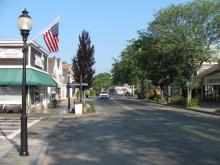DV Fiber Issues Request for Proposals To Bring Fiber to 20 Towns in Southern Vermont
DVFiber, a Communications Union District in southern Vermont representing 20 towns looking to build a Fiber-to-the-Premises (FTTP) network to more than 10,000 unserved and underserved households in the region, has issued a Request for Proposals (RFP) in search of private sector groups interested in a public-private partnership agreement.
The CUD envisions completing all connections by 2024 in two or three phases, with major progress made in the first year. The RFP provides detailed information on member towns for respondents, identifies possible funding identified by its Governing Board, and sets expectations for the resulting network. It sets a deadline for responses of March 26th, 2021.
“We are laser-focused on securing affordable, equitable high-speed Internet in our communities,” DVFiber Chair Ann Manwaring said in October of 2020. “The COVID pandemic has clarified this vital need, for education, for healthcare, for business. We are grateful for the support we have earned to date.”




